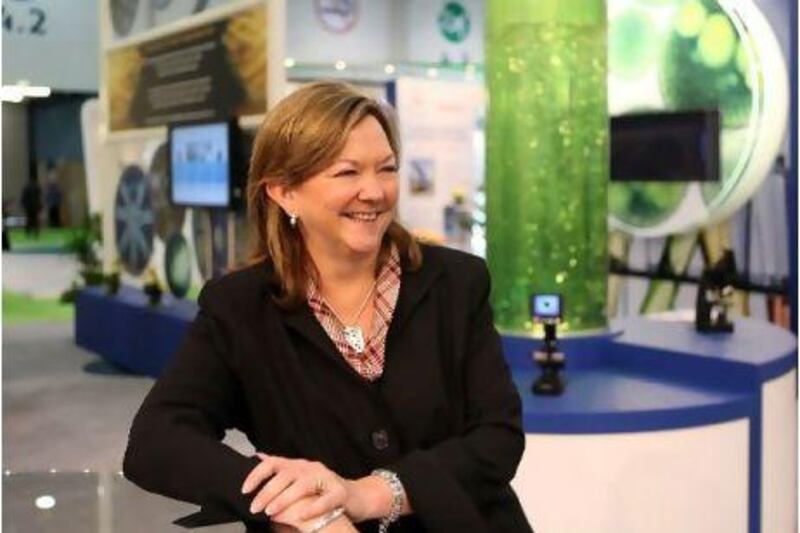Multinational oil companies are now offering technology aimed at helping their international partners achieve energy security objectives, even in Gulf states blessed with huge oil reserves.
In one of the region's greatest ironies, every Arab Gulf oil exporter except Qatar is experiencing difficulty providing sufficient domestic power supplies, largely because of insufficient gas production. ExxonMobil, for one, is ready to help with a suite of advanced technologies for finding and exploiting challenging gas deposits.
"Most nations would prefer to be self-sustaining in energy. It's a challenge for our industry," says Sara Ortwein, the head of upstream research and development for the big US oil group. "There are tremendous gas reserves here and around the world that remain untapped."
The GCC gas shortage is not caused by a lack of gas reserves. The problem is that most of the region's pure gas deposits - as distinct from its oilfield gas, which mostly must remain underground to push out the oil - are, for one reason or another, difficult and costly to exploit.
In Oman, the gas is locked in dense rock with tiny pores, which means many wells must drilled and the reservoir rock cracked open if the gas is to be coaxed out. In Abu Dhabi, Kuwait and potentially Bahrain, most deposits of "unassociated gas" lie deep underground, where drillers must cope with high temperatures and pressures. Moreover, such deep gas reservoirs normally contain high concentrations of hydrogen sulphide, a gaseous impurity that is extremely toxic and corrosive.
The region's gas reservoirs, often deep or scattered in small pockets, can also be difficult to locate. Kuwait Oil Company searched for four decades before, in 2006, discovering its first unassociated gas. Saudi Arabia called in foreign oil companies to uncover gas that geologists believed lay beneath the Arabian Desert, but the search has yielded limited results.
Ms Ortwein, a petroleum engineer by training, says ExxonMobil has developed technology that can help in all these areas. Each application has been more than a decade in the making, requiring a long period of continuous engineering improvement to reach the stage where it can make a real difference in reducing the cost of finding and exploiting the region's challenging reserves.
Take the company's "multi-zone stimulation" technology, developed to extract gas from the Piceance Basin of north-west Colorado, where, according to ExxonMobil, large volumes of US gas are "in scattered pockets deep underground in rocks as dense as cement".
ExxonMobil's technical breakthrough involved developing an efficient system to produce gas simultaneously, within a single well, from as many as 50 vertically stacked gas-rich zones. Starting from the bottom of the well, the surrounding rock is fractured to create a network of channels, extending out hundreds of metres from the well bore, through which the gas can pass.
Historically, perforating the steel lining of the well to allow gas to flow in from numerous zones would have required many separate operations. Now, in what ranks as a master feat of engineering, ExxonMobil has worked out how to perform a complex series of well perforations as a precise, continuous process.
"That greatly shortens the drilling process and gets the costs down," says Ms Ortwein.
Another ExxonMobil proprietary technology called "controlled freeze zone" (CFZ) is well suited to exploiting offshore "sour gas" deposits, from which acidic gases such as hydrogen sulphide and carbon dioxide must be removed without bulky processing equipment that offshore platforms cannot accommodate.
Abu Dhabi has at least one such gasfield, Hail. It has postponed plans to develop the field because of technical and safety issues.
In the CFZ process, the problematic impurities are separated cryogenically from the fuel gas. They can then be reinjected into the reservoir in liquefied form. This has the happy outcome of increasing the yield of useful gas while permanently sealing the impurities underground. The only drawback is that sulphur cannot then be recovered and marketed as a by-product, as normally would happen with an onshore sour-gas development.
Ms Ortwein was in Abu Dhabi last week, where she addressed the World Future Energy Summit in the capital.
Why should an oil company speak to an audience primarily interested in replacing oil and gas production with low-carbon energy?
"We believe that in the future, we are going to need all energy sources. Oil and gas will still be a significant part of that," she says. "The part of sustainability that is relevant to us is efficiency. If we can produce and use oil and gas more efficiently, that's part of sustainability."





